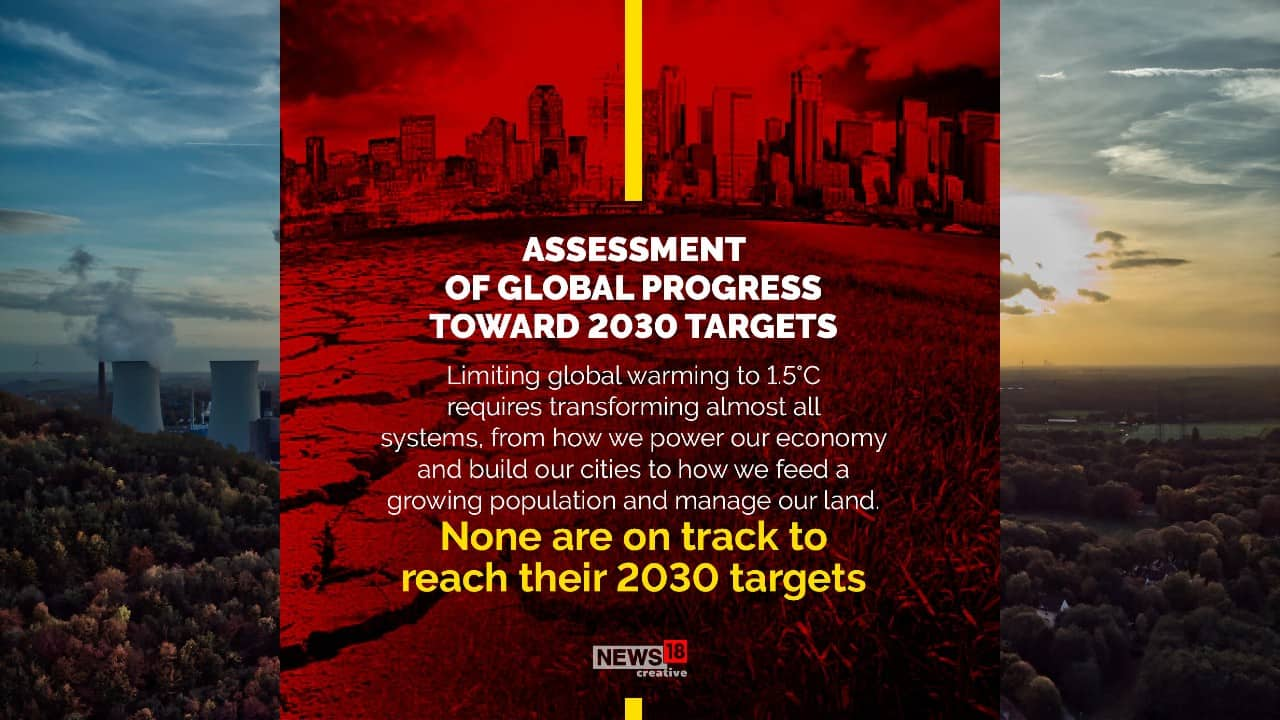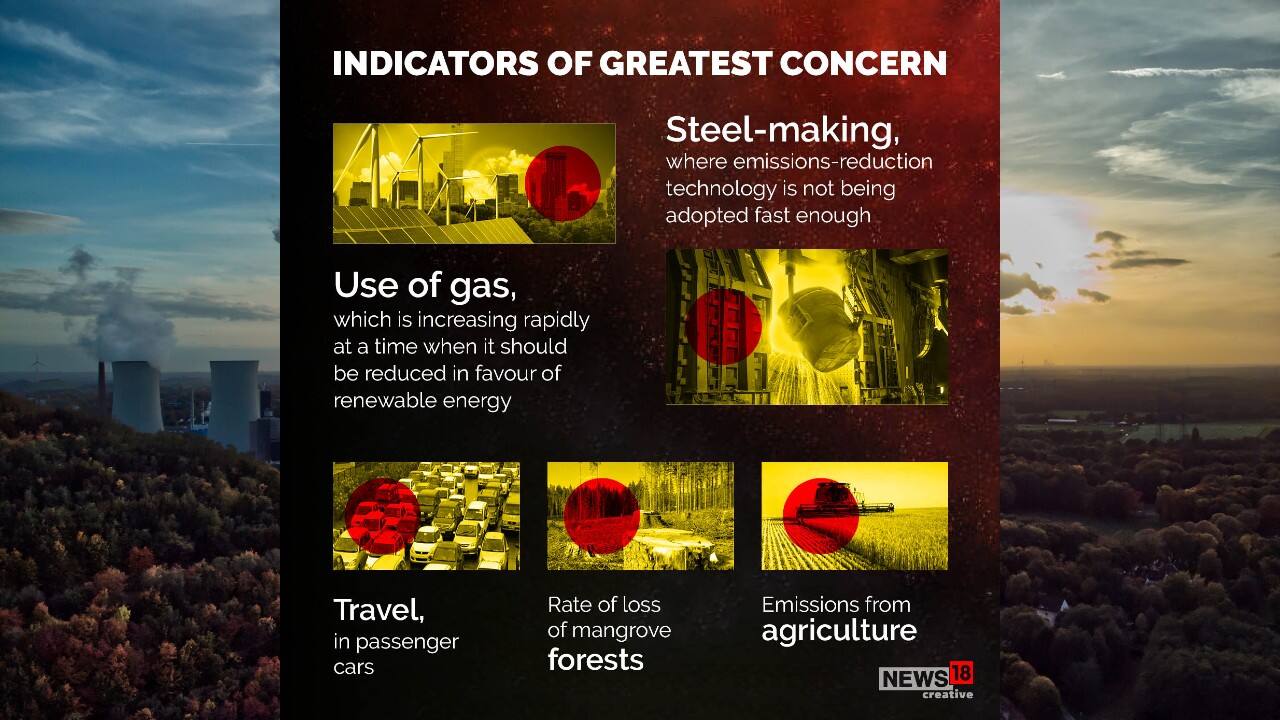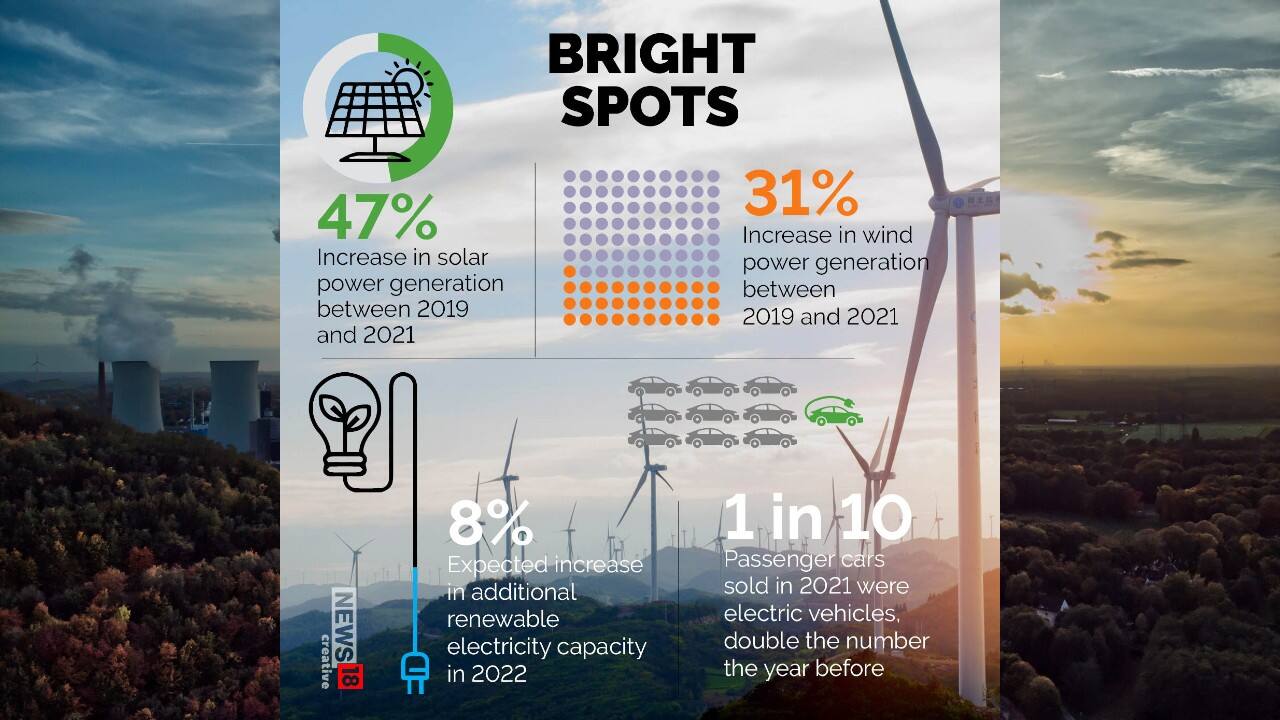Trending Topics:
- Jimmy Lai
- Bondi Beach shooting
- Putin
- Brown University shooting
- Trump
State of Climate Action Report 2022 | A look at how the climate change is affecting the world
Countries around the world are set to gatehr in Egypt for the 27th United Nations Climate Change conference, commonly referred to as COP27, after the historic 2015 Paris Agreement. Keeping the Paris Agreement’s goal to limit global warming to 1.5 degree Celsius within reach will require an enormous acceleration of transformations across all systems this decade.
1/13

In two weeks, nations are set to gather at UN climate talks in Egypt, to discuss unfulfilled promises and take stock of the fight to stave off environmental catastrophe. The State of Climate Action 2022 report, which examined global progress on 40 indicators that were the key to halving global greenhouse gas emissions by 2030, presents a gloomy picture, with just over half the indicators well off track and five heading in the wrong direction.
2/13

According to the State of Climate Action 2022 report, total global greenhouse gas emission in 2019 was 58.5 gigatonnes of carbon dioxide equivalent.
3/13

The report identifies 1.5°C-aligned targets and associated indicators for power, buildings, industry, transport, forests and land, and food and agriculture that the literature suggests are the best available to monitor sectoral climate mitigation pathways. Together, these sectors accounted for roughly 85 percent of net anthropogenic GHG emissions globally in 2019.
4/13

2.1 to 2.9 degree Celsius is the expected rise in temperatures by 2100, compared with pre industrial levels, without drastic reductions in greenhouse gas emissions.
5/13

Keeping the Paris Agreement’s goal to limit global warming to 1.5°C within reach will require an enormous acceleration of transformations across all systems this decade.
6/13

None of the 40 indicators of progress spanning the highest-emitting systems, carbon removal, and climate finance are on track to achieve 1.5°C-aligned targets for 2030, as per reports.
7/13

Use of gas, which is increasing rapidly at a time when it should be reduced in favour of renewable energy is of greatest concern.
8/13

There are signs of progress in the power system that invite optimism. Despite the global situation, zero-carbon power has continued to increase around the world. Between 2019 and 2021, generation of zero-carbon technologies has grown.
9/13

And largely driven by progress in China, the global share of battery electric and fuel cell electric vehicles in bus sales grew from 2 percent in 2013 to 44 percent in 2021— an increase of over 20 times in under a decade. These advances give us confidence that we can act decisively—and with results.
10/13

As a report card on global climate action, the State of Climate Action 2022 from Systems Change Lab translates these systemwide transformations into 40 indicators of progress with 2030 and 2050 targets to highlight where—and by how much—progress must accelerate to avoid increasingly.
11/13

To avoid the increasingly dangerous, and in some cases, irreversible climate impacts, efforts to phase out coal generation need to accelerate six-fold, equivalent to retiring 925 average-sized coal plants each year through 2030.
12/13

Declines in annual deforestation rates need to occur 2.5 times faster, equivalent to stopping deforestation across an area roughly the size of all the arable land in Switzerland every year this decade.
13/13

Recent increases in total global climate finance, which facilitates these transformations, need to grow over 10 times faster—by roughly $460 billion every year this decade.
Discover the latest Business News, Budget 2025 News, Sensex, and Nifty updates. Obtain Personal Finance insights, tax queries, and expert opinions on Moneycontrol or download the Moneycontrol App to stay updated!






